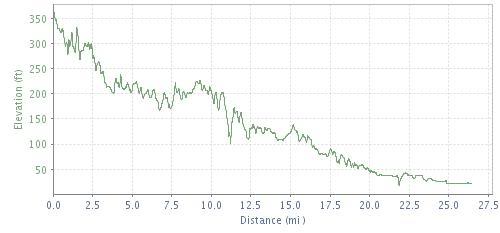 |
 |
| Except in this phase of training |
While each individual training phase has the same big goal, I add new things, take out some things and build my training in what I feel is the best way to not only being prepared for the marathon distance at the end of it, but being prepared for the marathon distance with a big focus on the exepected conditions of the course. Too many people focus too much on the distance without putting a lot of focus on what they will experience on the course on race day. The California International Marathon presents some different problems than the Houston Marathon did, so I will dial in on that in my training.

If I were training for a flat marathon, I would do a lot of workouts that enable me to get a fast maximum speed, namely a good bit of track workouts and faster running on flat ground. For you Hendersonville folks, that means my faster long runs on New Hope Rd-Long Hollow Pike-Happy Hollow Rd. and interval workouts and fartlek sessions back and forth on Lower Station Camp from the high school to the stop sign past the quarry.
I view the CIM course as somewhat of a milder version of the Boston course. It has a net downhill but with some uphill climbs. It's frequently advertised as a super-fast course, so a lot of people go there to run, well, super-fast. So they go out hard with visions of fast times in their heads and with a rolling first half, they end up beating their legs up and struggling home. I've heard from a lot of people that it's a much tougher course than they expected. I feel that it can be a really-fast course, if you run it correctly but has a smaller margin of error than a flat course. Long rant over.

While I don't think I'll have to focus a large chunk of my training on downhill running, like I will with Boston, I still have to give that training aspect some respect. Rather than doing a lot of structured track workouts, I'm going to do a lot of fartleks over rolling terrain to get a feel for the changes in rhythm and also to strengthen the muscles I'll use on the hills. And instead of doing my faster long runs on super flat ground, I'll switch it to slightly rolling terrain. If I'm not super-lazy on the strength work (like I have been), I'll slow down the eccentric contraction on squats, which I feel will better prepare me for the eccentric contractions you experience during downhill running. I will also experiment with some uphill tempos, and then may add some downhill finish tempos as well. Uphill finish tempos are common in Renato Canova's and Brad Hudson's programs and they are something I've always wanted to try.
But since my training will be pretty scattered, it's hard to post a predicted schedule. Race wise, I may (but probably won't) do an all-out 5k next week. Four weeks from now, I'm lacing up the spikes and racing my second cross country race in two years (and third in ten years). A week after that, I'm doing a marathon with a big elevation drop (over 1,000ft. I believe) and hoping to keep it under control. Three weeks after that, I'm racing a rolling half to most likely close out my speed phase. Since I have a busy racing schedule, I'm not going to have as many intense, grinding workouts. But then again, I don't think those are too important anyway.
I'm hoping to end the cycle in sub 64:00 half-marathon shape and will end it once I feel like I have the necessary speed or am starting to stagnate in my progression.
No comments:
Post a Comment